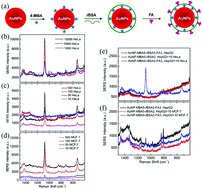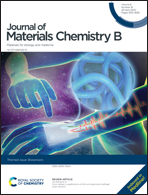An efficient strategy for circulating tumor cell detection: surface-enhanced Raman spectroscopy
Abstract
Circulating tumor cells (CTCs) are circulating cancer cells that shed from tumor tissue into blood vessels and circulate in the blood to invade other organs, which results in fatal metastases. The CTCs in human peripheral blood are the main cause of death in most cancer patients. The detection of CTCs is of great scientific significance and clinical application value for early diagnosis, rapid evaluation of the treatment effect, in vivo drug resistance testing, individualized treatment, tumor recurrence detection and survival time judgment, etc. The surface-enhanced Raman scattering (SERS) method possesses the features of remarkable detection sensitivity, a non-destructive nature, label-free detection, a quick spectrum response and a molecular fingerprint spectrum, which give it great potential in the detection field. In the past decade, SERS technology serving as a bioprobe has been increasingly applied to detect and analyze biological components due to its unique detection advantages. Here, we present an overview of SERS biosensing substrates and recent achievements in detecting CTCs using high-sensitivity SERS platforms, and provide a unique perspective on the design and application of high-performance SERS platforms for CTC detection, especially using non-metal materials.

- This article is part of the themed collection: Biosensors


 Please wait while we load your content...
Please wait while we load your content...